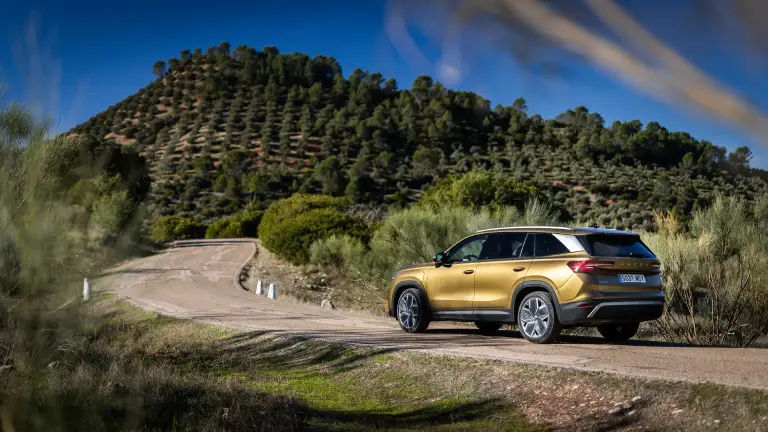› Three efficient, three-cylinder petrol engines with a 1.0-litre capacity available
› Two TSI and one MPI engine producing 55 kW (75 PS) to 81 kW (110 PS)
› All engines with second catalytic converter and redesigned engine management system
› TSI engines now equipped with petrol particulate filters and optional 7-speed DSG
There is a choice of three 1.0-litre three-cylinder engines for the ŠKODA FABIA which are both efficient and agile. Power output ranges from 55 kW (75 PS) to 81 kW (110 PS); the most powerful engine is also available with an automatic 7-speed DSG as an option. The 1.0 MPI with 44 kW (60 PS) will be launched during the year. Both TSI engines are now equipped with petrol particulate filters.
For the ŠKODA FABIA’s engine portfolio, the Czech car manufacturer is consistently backing nippy and efficient petrol engines. All engines have three cylinders and a 1.0-litre capacity. They differ mainly in their injection technology and forced induction. ŠKODA has made significant technical changes to the engines. From now on, all engines have a second catalytic converter and a redesigned engine management system.
MPI engine – significant technical changes
The fuel injection nozzles ensure now more effective fuel atomisation. Changes have been made to the oxygen sensor for a better fuel-air ratio. With indirect injection the engine produces a power output of 55 kW (75 PS). The combined fuel consumption and emissions of the 1.0 MPI with 55 kW are 4.8 l per 100 km (110 g CO2/km).
TSI engines – turbocharger and petrol particulate filter
With the TSI engines, fuel is injected directly at a higher pressure. In addition to the exhaust system including the turbocharger, the oil and cooling systems were also altered, and the engines were made more heat resistant by using new materials. The engine electronics have been adjusted, and a petrol particulate filter is now in use. This filter reduces the emission of particulate matter. Furthermore, the engine sensors for the management and diagnosis of the particulate matter filtration system have been improved. The TSI engines produce 70 kW (95 PS) and 81 kW (110 PS) respectively. The combined fuel consumption and emissions of the ŠKODA FABIA COMBI with 1.0 TSI with 70 kW are 4.5 l per 100 km (103 g CO2/km). The combined fuel consumption and emissions of the 1.0 TSI with 81 kW and 6-speed manual gearbox are 4.6 l per 100 km (105 g CO2/km).
Transmissions – 7-speed DSG optional for the most powerful TSI engine
A 5-speed manual gearbox transmitting the engine power to the front wheels is standard in the ŠKODA FABIA. The most powerful 1.0 TSI engine with 81 kW (110 PS) comes with a 6-speed manual gearbox as standard and is optionally also available with a 7-speed DSG. With direct-shift transmission, gears can be changed both manually and automatically.
Hermann Prax
Head of Product Communications
T +420 326 811 731
hermann.prax@skoda-auto.cz
Pavel Jína
Spokesperson Product Communications
T +420 326 811 776
pavel.jina@skoda-auto.cz
The specified fuel consumption and emission data have been determined according to the measurement procedures prescribed by law. Since 1st September 2017, certain new vehicles are already being type-approved according to the Worldwide Harmonized Light Vehicles Test Procedure (WLTP), a more realistic test procedure for measuring fuel consumption and CO₂ emissions. Starting on September 1st 2018, the New European Driving Cycle (NEDC) will be replaced by the WLTP in stages. Owing to the more realistic test conditions, the fuel consumption and CO₂ emissions measured according to the WLTP will, in many cases, be higher than those measured according to the NEDC. We are currently still required by law to state the NEDC figures. In the case of new vehicles which have been type-approved according to the WLTP, the NEDC figures are derived from the WLTP data. It is possible to specify the WLTP figures voluntarily in addition until such time as this is required by law. In cases where the NEDC figures are specified as value ranges, these do not refer to a particular individual vehicle and do not constitute part of the sales offering. They are intended exclusively as a means of comparison between different vehicle types. Additional equipment and accessories (e.g. add-on parts, different tyre formats, etc.) may change the relevant vehicle parameters, such as weight, rolling resistance and aerodynamics, and, in conjunction with weather and traffic conditions and individual driving style, may affect fuel consumption, electrical power consumption, CO₂ emissions and the performance figures for the vehicle.









